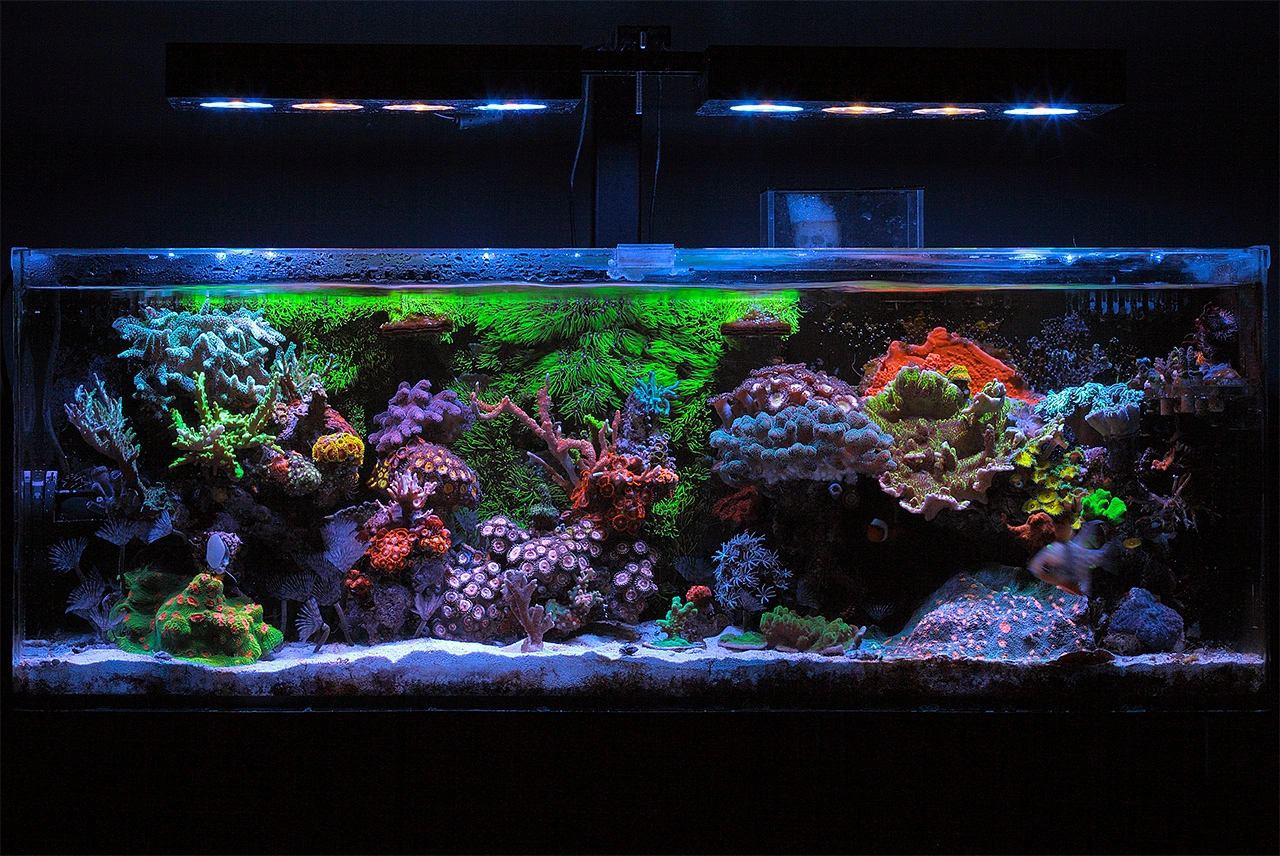Stunning 24-Gallon Reef Tank – Polarcollision's TOTM | NanoReef

Tank Specifications
Volume: 24 Gallons / 90 Liters
Dimensions (L × W × H):
36.0" ×
12.0" ×
12.0"
91.4cm ×
30.5cm ×
30.5cm
Equipment List
- Salt: Red Sea
Frequently Asked Questions
What is the ideal salinity level for my reef tank?
The ideal salinity level for a reef tank is typically around 1.025. This level replicates natural seawater conditions, promoting healthy marine life.
How often should I test my water parameters?
You should test your water parameters weekly, especially after making any adjustments or significant changes to your tank. Regular testing helps you monitor fluctuations in pH, alkalinity, calcium, and nitrate, which are crucial for the health of your corals and fish.
What should I do if my alkalinity is swinging more than .25 dKH?
If your alkalinity is swinging more than .25 dKH, you should consider adjusting your dosing schedule. Using automated dosing pumps can help keep levels stable by delivering smaller doses more frequently.
How often should I perform water changes?
For this 24-gallon reef tank, the owner recommends changing 5 gallons every 2-6 months to help maintain water quality while minimizing stress to the corals. Adjust this frequency based on your specific tank conditions and bioload.
What type of salt should I use for water changes?
Using a salt mix that closely matches natural seawater (NSW) parameters is essential. The owner finds RedSea blue bucket salt works well for their tank, providing balanced water chemistry.
How do I maintain trace elements in my reef tank?
The owner uses a combination of BRS Soda Ash, Calcium Chloride, Magnesium Sulfate, and Magnesium Chloride for dosing, adding appropriate trace elements from Fauna Marin Ultra Balling Light. This way, the necessary trace elements are maintained over time.
How can I prevent algae outbreaks in my reef tank?
To prevent algae outbreaks, maintain stable water parameters and nutrient levels. Regular maintenance, including cleaning the substrate and keeping up with water changes, can help. Adding herbivorous fish or invertebrates like a tuxedo urchin can assist is keeping algae in check.
What specific care do Acropora corals require?
Acropora corals require stable water parameters, particularly alkalinity which should be kept stable and not swing more than .25 dKH. Ensure good water flow and light intensity suitable for SPS corals, and monitor nutrient levels closely.
How do I encourage growth and color in my corals?
To encourage coral growth and coloration, maintain balanced parameters for calcium, magnesium, and alkalinity. Higher nutrient levels often correlate with vibrant coloration, so you may need to cater to your specific tank's nutrient levels to achieve the best results.
How does the digital aquatics controller help in reef tank maintenance?
The Digital Aquatics Reef Keeper Lite automates your water chemistry management by controlling multiple dosers for alkalinity, calcium, and magnesium. This reduces swings in important parameters, leading to a more stable environment for your fish and corals.
What role does the protein skimmer play in a reef tank?
A protein skimmer helps maintain water quality by removing organic waste from the water column before it has a chance to break down into harmful nitrates and phosphates. Regular maintenance of the skimmer is necessary for optimal performance.
How do I properly use wave makers?
Wave makers should be positioned to create a steady, gentle water movement throughout the tank without causing strong currents that can stress corals. Adjust their flow intensity based on the corals’ requirements and monitor the tank's water movement.